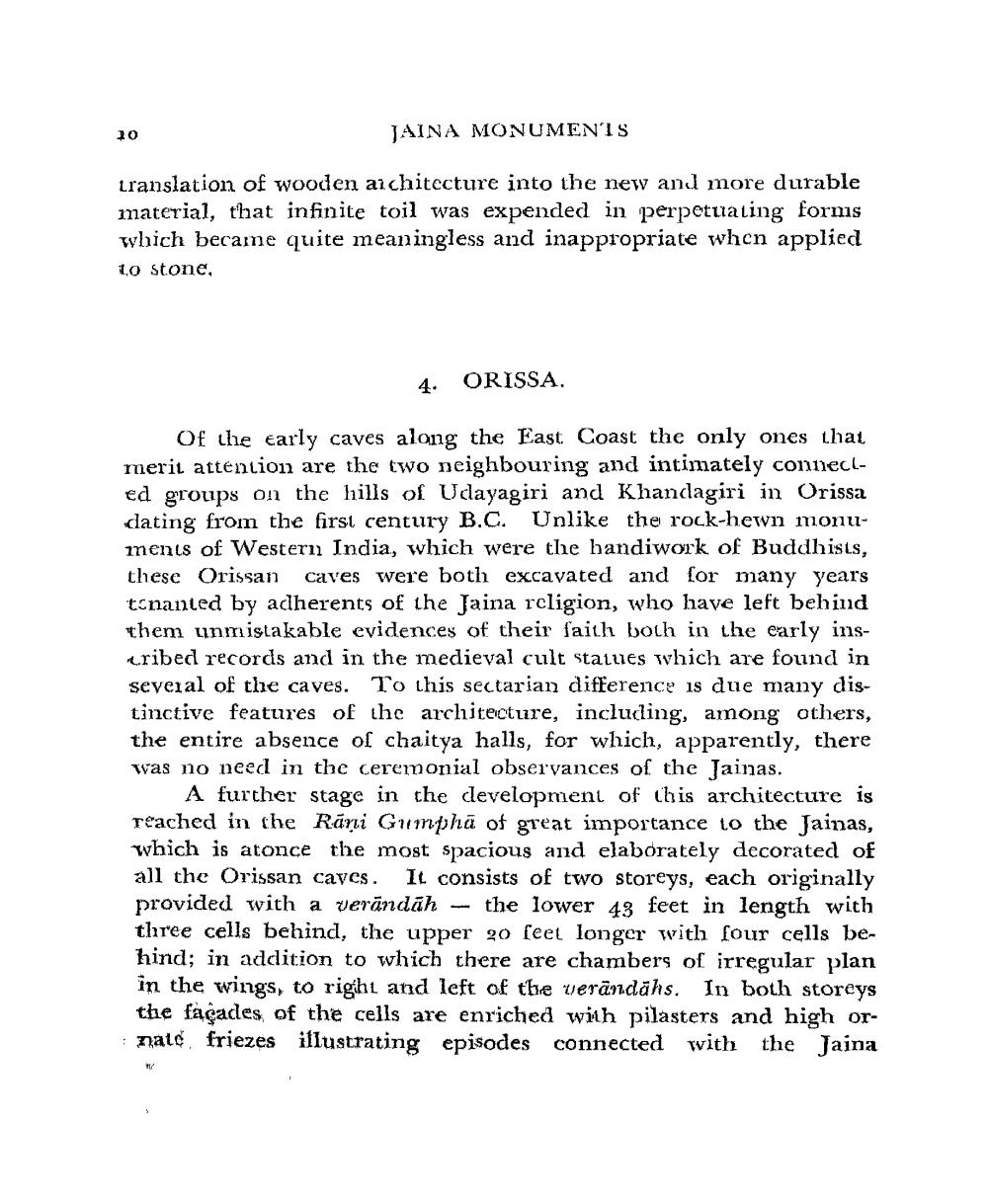________________
10
JAINA MONUMENTS
translation of wooden architecture into the new and more durable material, that infinite toil was expended in perpetuating fornis which became quite meaningless and inappropriate when applied 10 stone,
4. ORISSA.
Of the early caves along the East Coast the only ones that merit attention are the two neighbouring and intimately connected groups on the hills of Udayagiri and Khandagiri in Orissa dating from the first century B.C. Unlike the rock-hewn monuments of Western India, which were the handiwork of Buddhists, these Orissan caves were both excavated and for many years tinanted by adherents of the Jaina rcligion, who have left behind them unmistakable evidences of their faith both in the carly inscribed records and in the medieval cult stalues which are found in several of the caves. To this sectarian difference is due many distinctive features of the architecture, including, among others, the entire absence of chaitya halls, for which, apparently, there was no need in the ceremonial observances of the Jainas.
A further stage in the development of this architecture is Teached in the Rani Gumphā of great importance to the Jainas, which is atonce the most spacious and elaborately decorated of all the Orissan caves. It consists of two storeys, each originally provided with a verändāh - the lower 43 feet in length with three cells behind, the upper 20 feet longer with four cells behind; in addition to which there are chambers of irregular plan in the wings, to right and left of the verändähs. In both storeys the façades of the cells are enriched with pilasters and high ornatdfriezes illustrating episodes connected with the Jaina




